Ideal Customer Profile (ICP): Step-by-Step Guide for B2B Success
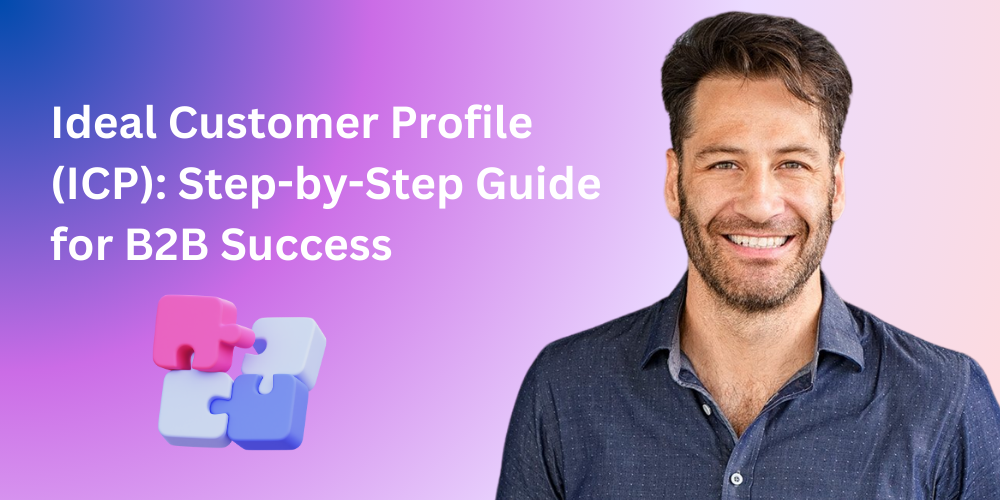
Your business won't get far if you’re pitching to the wrong people. Even the best products won't sell if you're knocking on the wrong door (awkward, right?). That’s why creating an Ideal Customer Profile (ICP) matters. It points your team to exactly who needs what you're offering, saving you time and money.
What Is a Customer Profile?
A customer profile is a snapshot of your ideal customer. It covers who they are, what they want, and how they behave—so you can market smarter and sell better.
B2C Customer Profile
Focuses on individuals. Includes:
- Age, gender, location
- Interests and values
- Buying habits and preferences
B2B Customer Profile
Focuses on companies. Includes:
- Industry and company size
- Revenue and location
- Key decision-makers and their goals
What’s an Ideal Customer Profile (ICP)?
Think of your ICP like your business’s dating profile: it describes your dream customer—the one who really wants and needs what you sell. It goes beyond basics like age and location. It includes their habits, pain points, and even the way they make buying decisions.
ICP vs. Buyer Persona: What's the Difference?
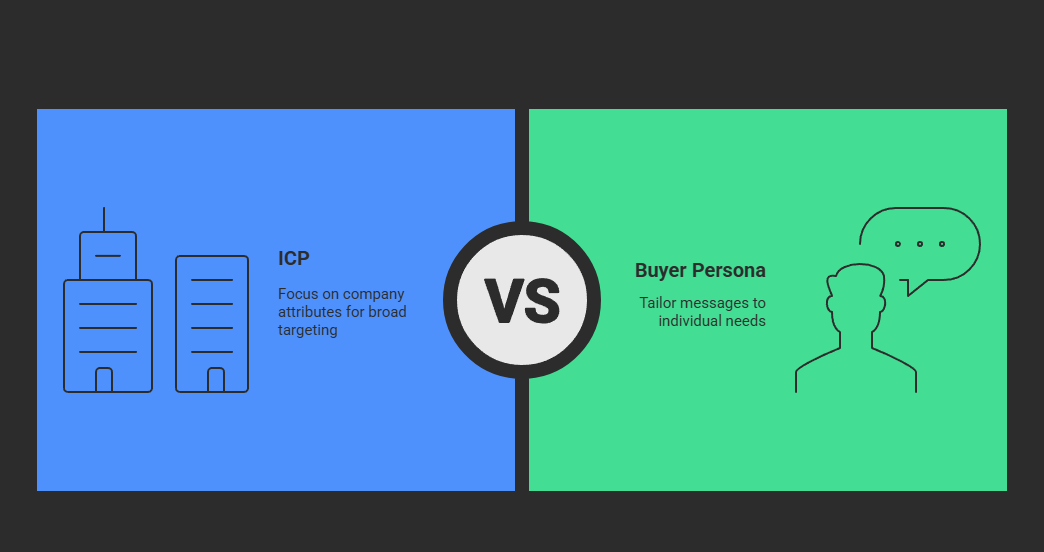
People mix these up all the time:
- ICP is about companies or groups—things like company size, industry, budget, or location. It's the first filter.
- Buyer persona zooms in on individuals—details like their job role, goals, or what annoys them at work. It helps your team tailor the perfect pitch.
Think of it like this: ICP tells you which companies to target; buyer personas tell you exactly who to chat with inside those companies.
Why Bother Creating an ICP?
Creating an ICP isn't just busywork—it boosts your bottom line:
- Better targeting: You attract customers who actually need you.
- Lower acquisition cost: Stop burning cash on people who’ll never buy.
- Higher satisfaction: Happy customers stay longer.
- Lower churn: You’ll spend less time waving goodbye to unhappy customers.
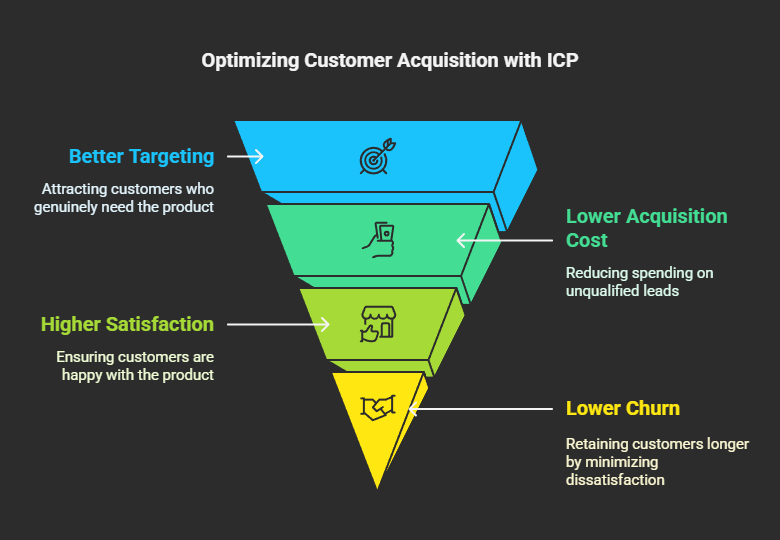
5 Easy Ways to Build an ICP For Best Results
Below is a step-by-step guide on how you can build an ICP:
Step 1: Look at Your Best Customers
Start by picking out your happiest customers. The ones bringing in money without fuss. Check out:
- Their industry
- Company size and revenue
- How quickly they made a decision
- Why they're happy with you
Step 2: Ask Them Directly
Don't guess—talk. Set up quick chats, surveys, or video calls. Ask stuff like:
- Why did you pick us?
- What do you love (or hate) about working with us?
- Who makes buying decisions at your company?
Step 3: Map Their Journey
Walk in their shoes (not literally—unless you’re into that). Look at how they found you and why they stayed:
- What made them buy?
- What obstacles did they face?
- What problems did you solve?
Step 4: Check the Competition

Look at what your rivals are up to. See what gaps you can fill or improvements you can make. Stand out by knowing what makes you better.
Step 5: Build Your Buyer Persona
Time to zoom in. Get personal:
- What's their job title?
- What's their budget like?
- What worries keep them up at night?
- How do they decide what to buy?
Supercharge LinkedIn Prospecting with Leadplay.io
LinkedIn Sales Navigator is powerful but expensive (we're talking $100 a month per account 🤯). Here’s how you save some cash:
- Use one LinkedIn Sales Navigator account to search and filter leads.
- Export those leads into a CSV.
- Import the CSV into leadplay.io and create multiple outreach campaigns—all without needing extra Sales Navigator subscriptions.
The Ultimate ICP Framework
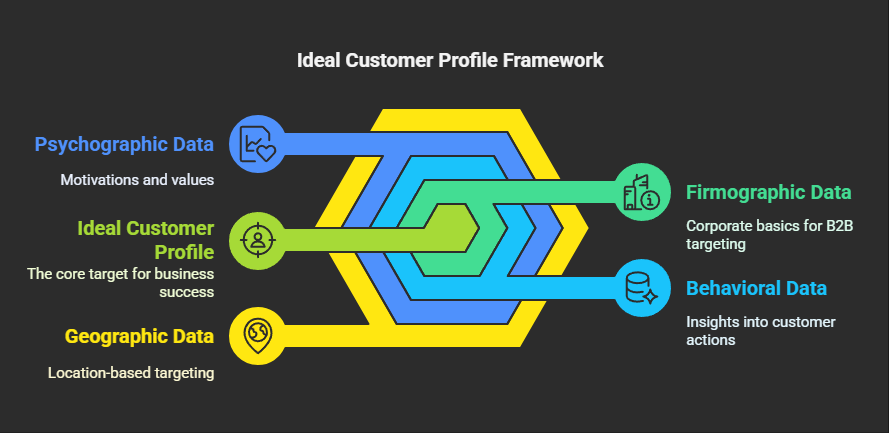
Here’s a detailed cheat-sheet to help you c raft an Ideal Customer Profile (ICP) without getting lost in the weeds. Think of it as your north star for targeting the right customers—so you stop guessing and start closing.
Geographic Data (Where are they?)
Start with the basics—knowing where your ideal customers are helps you target your efforts efficiently and avoid wasting time on unreachable leads.
- City: Zero in on specific cities where your target audience actually lives or does business. Urban hubs? Tech towns? Tourist traps? You decide.
- Country: Stick with a handful of key countries that offer the best fit for your product and services—scattershot targeting rarely works.
- Region: Think bigger than cities, smaller than continents. Prioritize areas that align with your delivery, sales, or support infrastructure.
Psychographic Data (What makes them tick?)
This is where you go beyond the "who" and into the "why." Understand what drives them, motivates them, and keeps them scrolling at 2 a.m.
- Lifestyle: What do their day-to-day lives look like? Are they digital nomads, busy execs, side hustlers, or homebodies with a tech addiction?
- Values: Tap into their beliefs—what do they care about? Sustainability, innovation, work-life balance? This helps shape your brand voice and message.
- Pain Points: What problems are they desperate to solve? Identify the thorns in their side so you can offer the bandaid (or the miracle cure).
- Goals: What are they chasing? Whether it's revenue growth, better time management, or inner peace, your product should get them closer.
Behavioral Data (What do they actually do?)
Forget what they say—what really matters is what they do. Behavioral data reveals how they engage, decide, and act.
- Engagement: Are they lurking quietly or liking every post? Track their interaction levels with brands like yours.
- Buying Readiness: Are they just browsing or already pulling out the company credit card? Prioritize those closer to the decision point.
- Past Purchases: Dig into what they’ve bought before—similar tools, complementary products, or competitors—to guide your messaging.
Firmographic Data (Corporate basics)
If you're selling B2B, this is your bread and butter. Understand the structure and scale of the companies you're targeting.
- Company Size: Whether you're suited to scrappy startups, mid-sized movers, or enterprise giants, size definitely matters here.
- Industry: Hone in on sectors where your solution is mission-critical or massively valuable—think fintech, SaaS, e-commerce, etc.
- Revenue: Go after businesses that can actually afford what you’re selling. No use pitching a Rolls-Royce to someone on a scooter budget.
- Ownership: Is your ideal client privately owned, venture-backed, publicly traded, or a non-profit? This affects sales cycles, decision-makers, and messaging.
ICP Examples (Real Quick!):
Here are four easy-to-follow examples you can adapt as templates for your ICP:
Scorecard Method

- Use a scoring system (like BANT: Budget, Authority, Need, Timing) to rate each company.
- Assign a simple score from 0 to 2 for each factor.
- Shortlist companies that hit your target score for prospecting.
Segmentation Approach
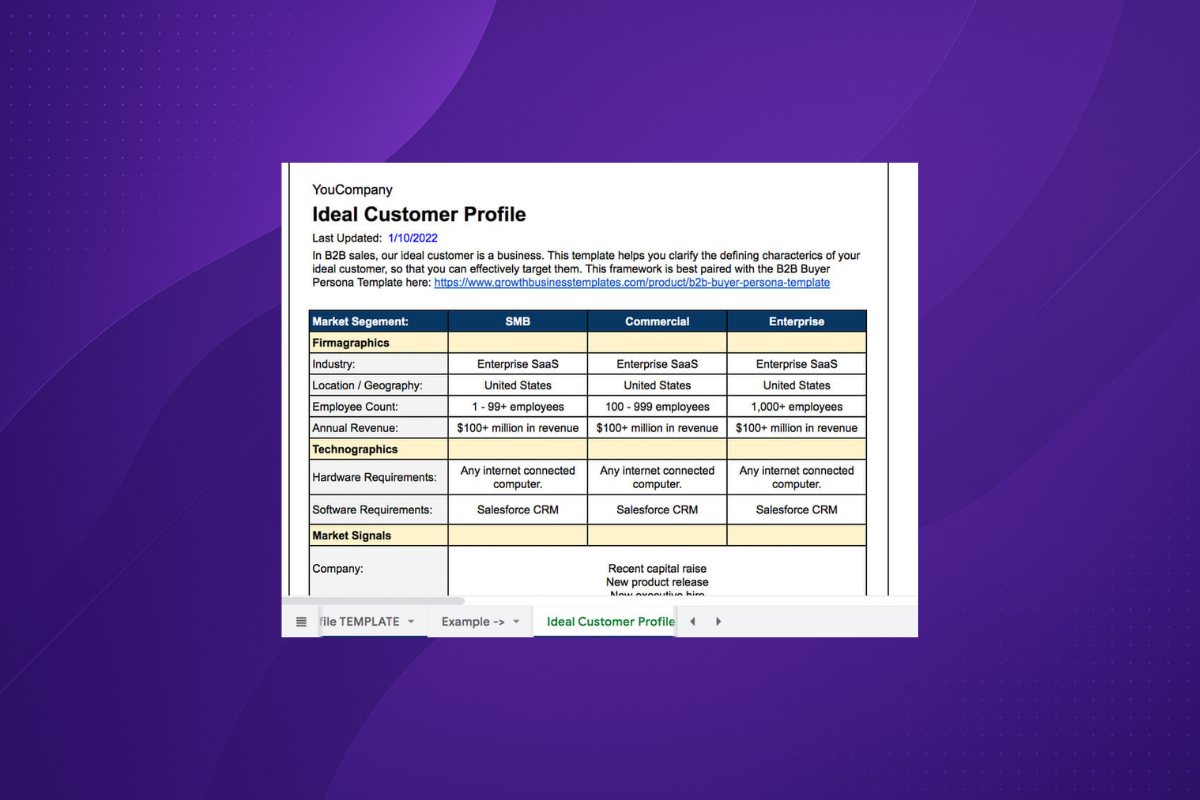
- Divide your prospects based on clear segments like description, age group, or marketing priority.
- This helps your marketing team quickly choose the best messaging and outreach channels.
Basic Information Profile

- Include essentials: demographics, product/service history, customer pain points, and key benefits.
- Perfect if you want to keep things straightforward and directly useful.
Profile with Key Abilities

- Evaluate prospects on critical abilities such as:
- Need: Do they have problems your product solves?
- Time: Can you deliver your solution when they need it?
- Success: Have they previously used similar solutions successfully?
- Budget: Do they have enough resources for your offering?
- Decision-makers: Are the influencers or decision-makers clearly benefiting from your solution?
Wrapping Up
Without a clear ICP, you're basically throwing darts in the dark—fun, but not very effective. Building a solid ICP means less wasted time, happier customers, and (yes!) more sales. Get started by knowing who your best customers are and what they really want.